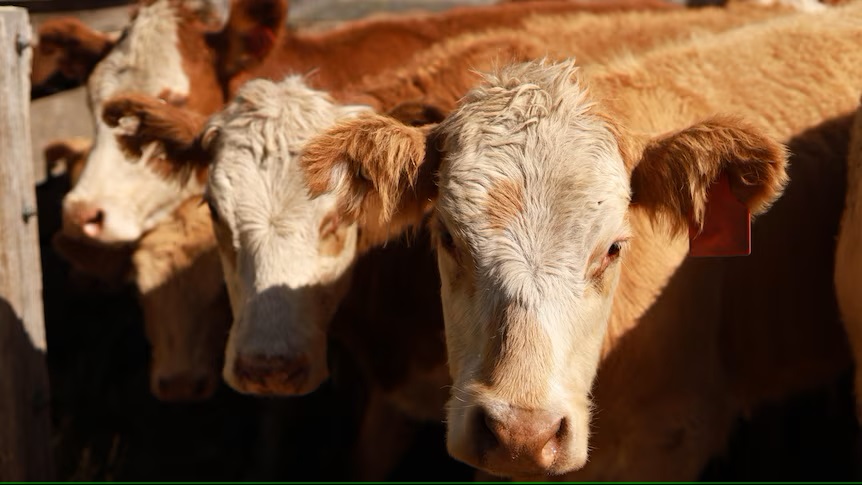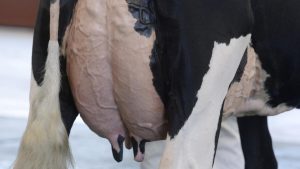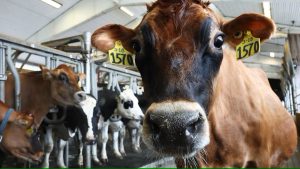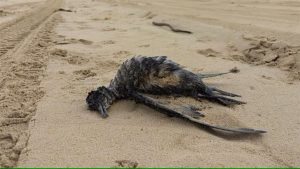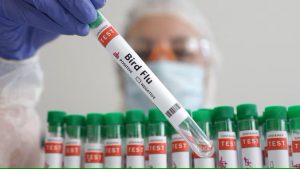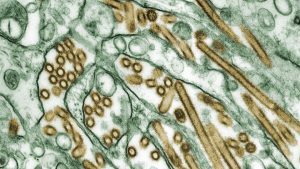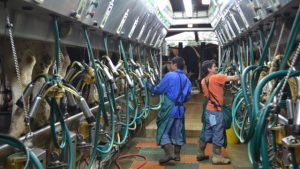
The United States Department of Agriculture (USDA) says Avian Influenza HPAI (H5N1 strain), commonly called bird flu, has been found in multiple dairy herds in Kansas and Texas.
Soon after the USDA announcement, four US dairy associations made a joint statement to reassure consumers that the dairy supply would be safe.
“Routine testing and well-established protocols will continue to ensure that only safe milk enters the food supply,” the statement said.
Authorities said the risk to humans was low as milk would be destroyed and sick cattle would not end up in the meat supply chain.
Australian-based livestock analyst Simon Quilty said American beef operators said there had been no trace of the disease in the 87-million-head cattle herd.
“But what we are going to see [is] there will be substantial testing across herds and feedlots to ensure there is no infection going on,” Mr Quilty said.
American meat producers are also trying to allay fears for consumers, including Meat Institute president and chief executive Julie Anna Potts.
“According to the Centers for Disease Control and Prevention (CDC) and USDA food safety experts, properly prepared beef is safe to eat,” Ms Potts said.
“HPAI cannot be transmitted to humans by eating meat or poultry products.
“The Meat Institute and its member companies will continue to be vigilant to aid in the efforts to stop the spread of the disease among animals in food production.”
Spread of bird flu worrying
This latest case is not the first time that bird flu has been found in mammals.
H5N1 has been found in polar bears, South American seals and even in Antarctica.
The spread to livestock has not surprised one expert, who says it is a numbers game for the disease to be able to spread as it becomes more prevalent across the world.
Professor Marcel Klaasen from Deakin University, who studies bird migration and the spread of disease, said livestock industries should be concerned.
“The chance of mammals to be infected is small, but just because there is so much virus around, more mammal species are becoming infected,” Professor Klassen said.
“Then, as mammals can infect each other, obviously, it is not a bird flu anymore it becomes a mammal flu.
“Seventy per cent of all the biomass of birds on this planet is poultry. There will be new strains that will emerge in the poultry industry,”
Professor Klaasen said with humans and livestock being a majority of biomass on the planet there was more opportunity for infection.
“However, this virus needs to go through a number of mutations to make it really fit for mammals and humans,” he said.
“I don’t want to cause any panic but we need to do something about this because ultimately this is only going to get worse.
“Unless we do something about the evolution of these really nasty strains, then it will not only infect birds but, as we now learned from the case in Texas and Kansas, in cows, [it will infect] mammals and ultimately also us.”
Australia Wildlife a concern
With Antarctica infected, Australia is the last continent on Earth without a mass outbreak of H5N1 avian influenza.
There have been other outbreaks of bird flu in Australia, most recently in Victoria in 2020, but they have been other strains of the disease.
Professor Klassen said if the virulent strain of the disease reached Australia via migratory birds, native animals could be affected.
“I am very concerned about the wildlife in Australia because they are the ones that are most vulnerable at the moment,” he said.
“I am worried about how the disease would spread across Australia.”
“We have to be aware there are so called zoonotic diseases that can spread between different species of animals and that should be high on our agenda … increasingly so.”
You can now read the most important #news on #eDairyNews #Whatsapp channels!!!
🇺🇸 eDairy News INGLÊS: https://whatsapp.com/channel/0029VaKsjzGDTkJyIN6hcP1K
